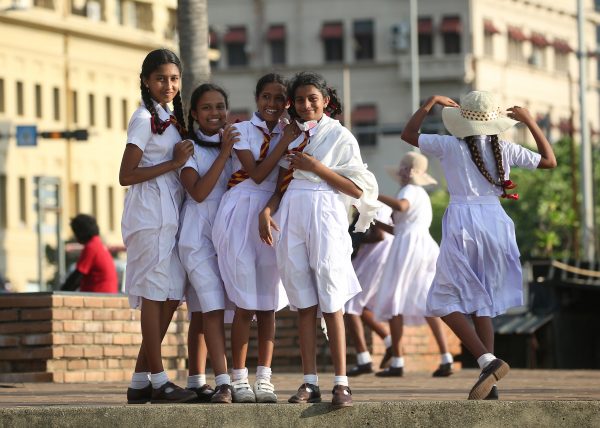Sri Lankan families are not only unable to afford to send their children to school, they can barely afford to feed them. How the Sri Lankan government responds and whether civil society will hold their government accountable will largely determine whether this crisis will be a catalyst for the transformation of an obsolete education system or a future in which Sri Lanka loses its educational gains and possibly its middle-income status.
COVID-19, poor economic and agricultural decisions, a corrupt government and the Ukraine war have resulted in an acute economic crisis in Sri Lanka. Over 6.2 million people, including 2.9 million children, urgently need humanitarian assistance. The education sector has been hit hard, with children facing a triple threat — learning loss, poor nutrition and challenges to well-being. School closures during COVID-19 and repeated closures in 2022 from fuel shortages due to the economic crisis have robbed a generation of children of their right to education for nearly two years.
Most schools have reopened but children’s attendance has not returned to pre-pandemic levels. Skyrocketing food prices are a major barrier to school attendance, with children missing school due to hunger or schools asking parents not to send their children hungry. Sri Lanka’s progress in child nutrition has fallen, with nearly 43 per cent of children under five experiencing undernutrition.
Among low-income homes, children are dropping out to support their families economically. The economic crisis is disproportionately impacting children from socioeconomically disadvantaged or marginalised backgrounds, with the poorest students experiencing 57 per cent more learning loss than the richest.
One of the long-term impacts of the economic crisis is the perpetuation of the cycle of generational poverty in Sri Lanka. Given Sri Lanka’s decades-long civil war over inequitable access to educational opportunities between majority and minority groups, closing the gap in access to quality education is in the government’s interest for achieving economic stability and, more importantly, maintaining peace and national unity. The Ministry of Education (MoE) urgently needs to meaningfully address the high levels of learning loss in marginalised communities.
The MoE has made some efforts to recover learning loss by introducing the Essential Learning Content curriculum focused on key literacy and numeracy skills. But it has failed to adequately measure or address learning loss and dropouts through proven strategies such as school meal programs. The current school meal program falls considerably short, reaching only 1.1 million school children out of 4.3 million. In January 2022, the government reduced the school meal budget by two-thirds, resulting in fewer and lower-quality meals and keeping more children from school. Stakeholders have denounced these moves, noting that the government has been unresponsive or complicit.
Without immediate and direct intervention from the government, children in Sri Lanka face a future of unpredictable educational outcomes, inequitable access to higher education and an increase in child protection issues.
The silver lining of this crisis is that it has forced the MoE to face its many shortcomings through long-overdue education reforms focused on reducing exams, collaborative learning and ensuring no child is left behind. But these reforms do not go far enough to address the root causes of Sri Lanka’s education crisis. Sri Lanka’s much-lauded achievements in education — the result of investment by successive governments through a welfare state model since independence — have slowly been eroded through the combined effects of economic liberalisation in 1977 and decades of low investment as a result of defence-focused spending since the 1980s.
Though the government has made education widely available to all Sri Lankan people, its low investment has resulted in a two-tier system where only those in the middle class and above have access to quality education, particularly in information technology, science and English. Qualified science and English teachers are often concentrated in international, urban and other privileged schools, leaving children from rural and marginalised communities behind.
Rather than addressing this gap in the public system, the government has straddled the cost of quality education on parents and used the poor quality of public education as an excuse to privatise higher education. The proliferation of private tutoring institutions, which have only grown in number and influence since the COVID-19 pandemic and the continual expansion of international and private schools have created a market-driven education system, which is increasingly shaped by the ability to pay.
The disparity in access will only grow as the government pushes forward with measures to create a new economic system by privatising and commodifying higher education, in the hopes of rebalancing Sri Lanka’s books. It will be up to civil society and stakeholders to ensure reforms focus on the interest and needs of learners rather than ad-hoc directives driven by ill-informed decisions and political interests.
Thursica Kovinthan Levi is SSHRC Postdoctoral Fellow and Lecturer at the Ontario Institute for Studies in Education, University of Toronto.

